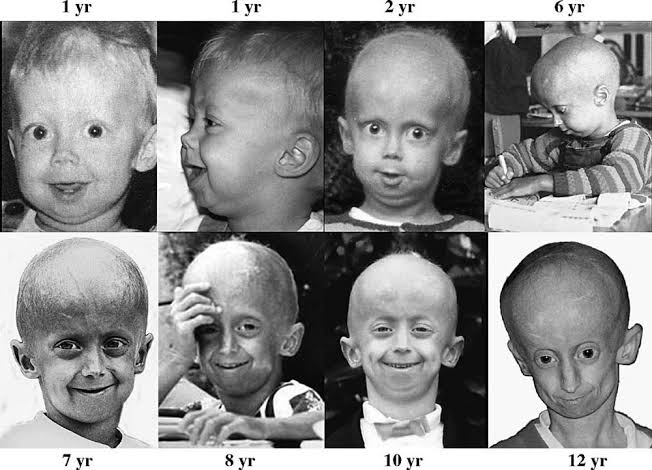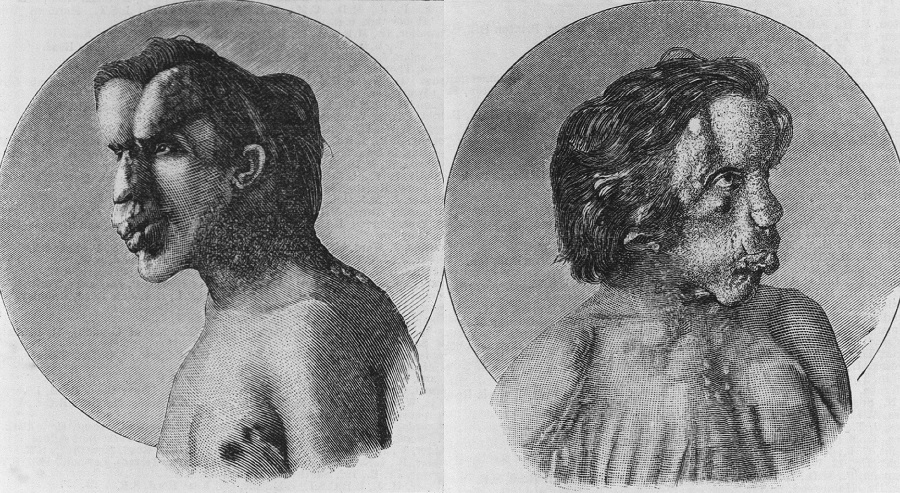Progeria, or Hutchinson-Gilford Progeria Syndrome (HGPS), is rare, fatal genetic disorder manifesting as accelerated ageing. Early infancy appears normal, but growth delays occur around 9-24 months, causing short stature and low weight. Distinctive facial features emerge small face, an underdeveloped jaw, prominent eyes, a small nose, and blueness around the mouth. Hair loss follows, and arteries thicken prematurely, leading to cardiovascular issues. By age 14.5, heart disease claims lives. Like ageing adults, progeria patients face high blood pressure, strokes, angina, heart enlargement, and failure.1,3.
This genetic disorder has captivated the curiosity of medical researchers and the sympathy of communities worldwide.1 In this article, we investigate the multifaceted nature of this intriguing syndrome, exploring its causes, symptoms, and the ongoing quest for effective treatments.
Also read The Widowmaker: A Deadly Heart Attack You Need to Know About
Understanding the Origin of Hutchinson-Gilford Progeria Syndrome (HGPS)
Progeria is an extremely rare, affecting just 1 in 4 million live births worldwide. Globally, approximately 400 children and young adults grapple with this condition. Hutchinson-Gilford Progeria syndrome stems from a mutation in the LMNA gene, located on chromosome 1. This mutation leads to the development of an abnormal protein called Progerin, which accumulates within the nucleus of cells. Progerin disrupts the structural integrity of the cell’s nucleus, causing it to take on an irregular shape. Most cases arise from spontaneous LMNA mutations, not inherited, often in sperm cells before conception. Researchers are trying to figure out how these alterations result in the symptoms of Hutchinson-Gilford Progeria syndrome. 1,2.

Symptoms & Diagnosis of Hutchinson-Gilford Progeria Syndrome (HGPS)
Progeria mimics early ageing but strikes young. From infancy, symptoms manifest, resembling rapid ageing that includes:
- Short stature & stiff joints
- Wrinkled skin and balding
- Scleroderma like skin
- Fat loss
Craniofacial changes:
- Open fontanelle (large open soft spot on the head)
- Large head, narrow face & beaked nose
- Delayed teeth with small jaw
Healthcare providers might suspect progeria based on symptoms. A genetic test for the LMNA gene changes it. A comprehensive child exam measures growth, hearing, vision, vital signs, and visible progeria symptoms. Since progeria is not so very common, more information might be needed for the next steps in a child’s care. Open discussion aids decision-making.
A Glimpse into Treatment Effort2
There is no cure for HGPS, but medical researchers are diligently exploring potential treatment avenues. One such approach involves targeting the production of progerin. Small molecule drugs have shown promise in reducing cell progerin levels, effectively alleviating some symptoms associated with the syndrome. Additionally, advancements in gene editing techniques can correct the LMNA gene mutation, presenting a ray of hope for future therapies.
The Collaborative Quest
The rarity of Hutchinson-Gilford Progeria syndrome has prompted researchers, medical professionals, and families to come together globally to understand the condition better and develop treatments. The Progeria Research Foundation (PRF) has been at the forefront of this collaborative quest. The foundation drives scientific research and provides support and resources for affected families, emphasizing the importance of a holistic approach to combating this syndrome.2
Beyond HGPS: Understanding Ageing2,3.
The lessons we learn from researching it have wider significance for comprehending how ageing happens naturally. Investigating progerin and its impact on cells unveils the complex mechanisms driving ageing in all cells. By understanding how progerin speeds up ageing, scientists gain valuable insights into the factors influencing the gradual ageing experienced by most people.
Conclusion
Hutchinson-Gilford Progeria syndrome shows how genes, cells, and getting older are connected. Even though it’s rare, it’s important for doctors. It helps us learn about getting older. Scientists, doctors, families, and groups like the Progeria Research Foundation are working together to understand and treat it better.1,2,3
Read the full insights about Medical Case Studies 2024: A Deep Dive into Rare and Peculiar Medical Phenomena
References
- Progeria. Accessed 9, 2023. Available at: https://my.clevelandclinic.org/health/diseases/17850-progeria
- Gordon LB, Brown WT, Collins FS. Hutchinson-Gilford Progeria syndrome. December 2003 [Updated January 2019]. GeneReviews®. Available at: https://www.ncbi.nlm.nih.gov/books/NBK1121/
- Progeria. Accessed 9,2023. Available at: https://www.mayoclinic.org/diseases-conditions/progeria/symptoms-causes/syc-20356038
About Docquity
Docquity is an AI-based state-of-the-art private & secure continual learning network of verified doctors, bringing you real-time knowledge from thousands of doctors worldwide. Today, Docquity has over 400,000 doctors spread across six countries in Asia.
Meet experts and trusted peers across Asia where you can safely discuss clinical cases, get up-to-date insights from webinars and research journals, and earn CME/CPD credits through certified courses from Docquity Academy. All with the ease of a mobile app available on Android & iOS platforms!



